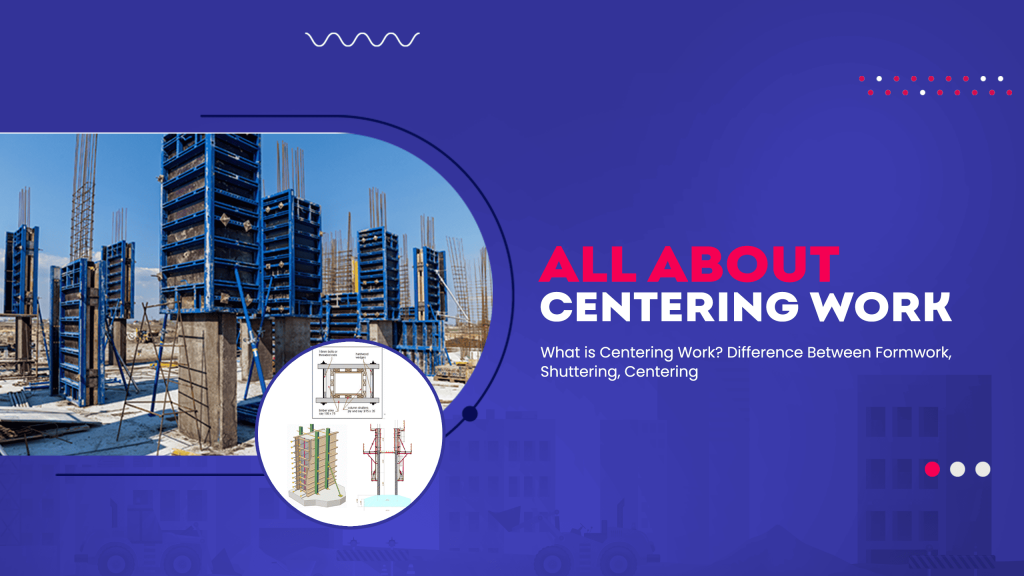Work Hours
Monday to Friday: 7AM - 7PM
Weekend: 10AM - 5PM
What is Centering Work? Difference Between Formwork, Shuttering, Centering

Centering in construction is essential to the construction industry because it offers interim support for concrete structures while they are being built. We will explore the world of centering work in this blog article, as well as its relevance and the distinctions between formwork, shuttering, and centering. You can better understand the fundamental components involved in building durable and dependable concrete structures by being familiar with these words.
Importance of Centering in Construction
Integrity of the building: Proper Centering guarantees that concrete is poured accurately and consistently, preventing any unevenness or weak places that may jeopardize the integrity of the building.
Concrete Protection: Centering protects the concrete while it cures, reducing damage and retaining its intended shape. During the earliest phases, when the concrete is still delicate, this shielding is very important.
Types of Centering in Construction
Investigating Centering Types There are many Centering types that can be used, based on the needs of the project:
Timber Centering: Constructed using timber supports and beams, this conventional method is economical. For installation and disassembly, it calls for greater labor, though.
Steel Centering: By using steel beams and supports, steel Centering provides improved strength and longevity, making it suited for big or complicated projects. Even though it is more expensive, it offers more longevity and stability.
Reusable Centering: This approach to Centering uses parts that may be applied to other projects, saving time and resources. It provides economical and effective solutions by doing away with the requirement for constant whole reconstruction.
Difference Between Formwork, Shuttering & Centering
The temporary buildings used to support the formwork for horizontal parts like slabs and floor beams are referred to as centering work. These frameworks are made up of beams and supports that produce a flat pouring surface for concrete. After the concrete hardens, the centering is taken out, leaving the slab or beam free to stand on its own.
Formwork, shuttering, and centering are different things
Formwork: Formwork includes any ad hoc, transient framework used to support vertical and horizontal elements of concrete. During the concrete pouring process, it offers stability and shape, ensuring accuracy and structural integrity.
Shuttering: Shuttering is a particular kind of formwork used for vertical elements such as columns and walls. Shuttering, which is often made of plywood or metal sheets and is supported by wood or steel, makes it easier to pour and set concrete in vertical parts.
Contrarily, centering is a type of transient support only applied to horizontal parts like slabs and floor beams. The centering, which is frequently built of wood or steel beams, provides a level surface for pouring concrete while ensuring precision and structural integrity.
Conclusion
In conclusion, centering work holds significant importance in construction projects. It provides crucial support and framework for concrete structures, ensuring their stability and strength. By comprehending the distinctions between centering, formwork, and shuttering, contractors can effectively plan and execute their projects. Whether you’re an experienced professional or a curious enthusiast, understanding the intricacies of centering in construction will enrich your knowledge of the building process. Remember, establishing a solid foundation through proper centering sets the stage for a successful construction endeavor.






